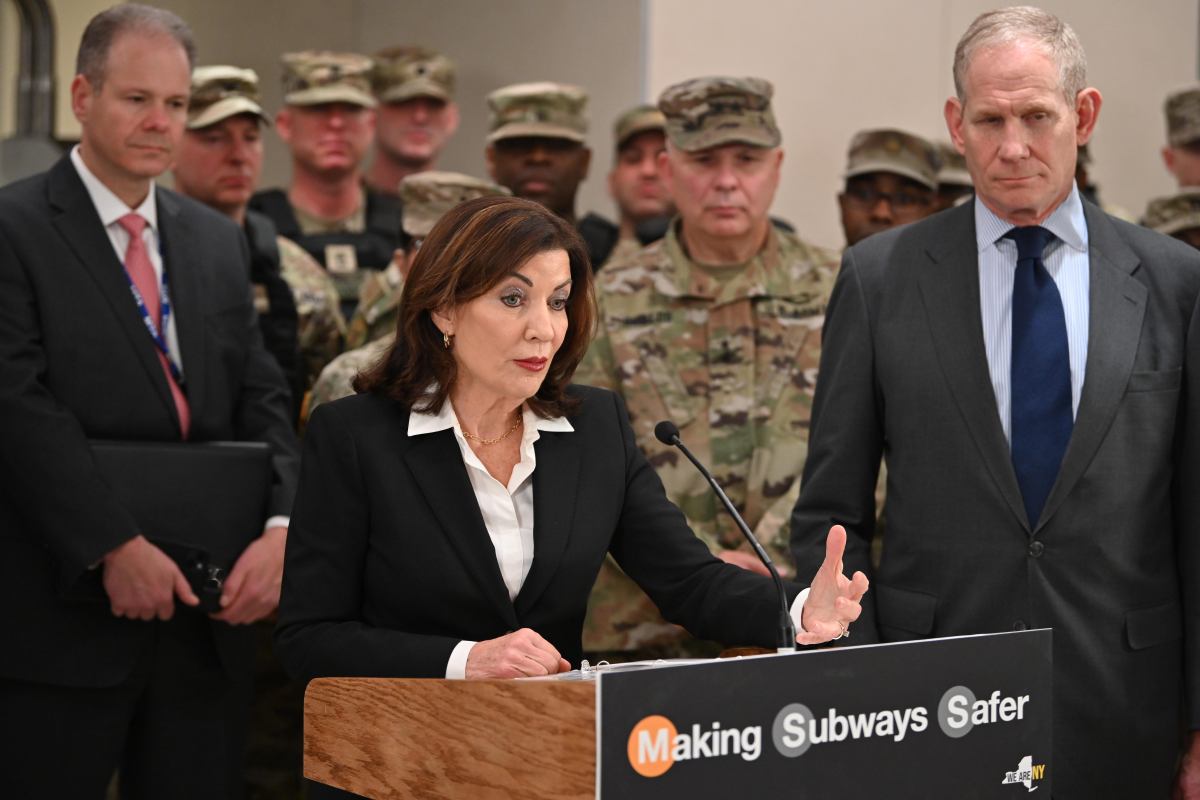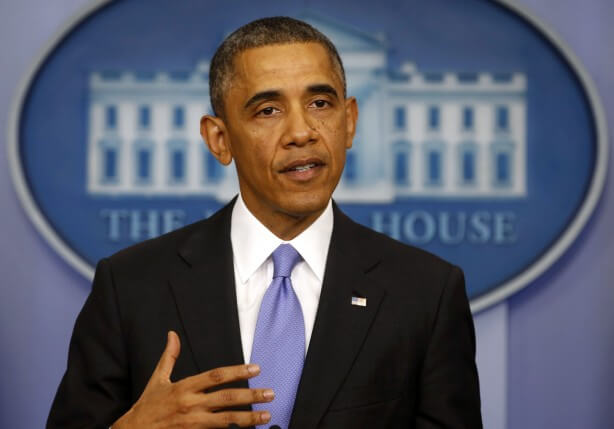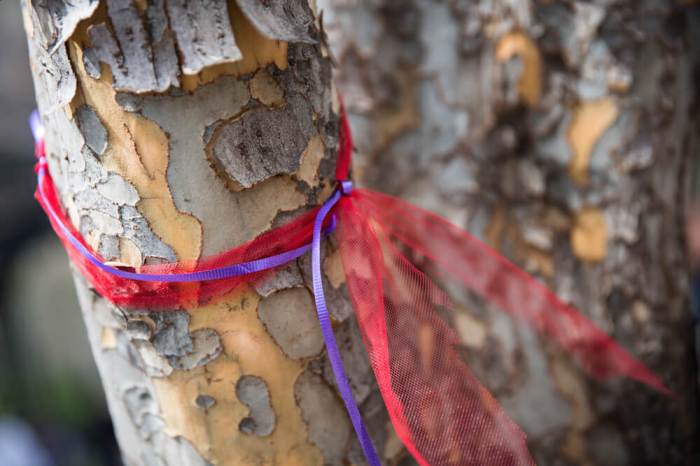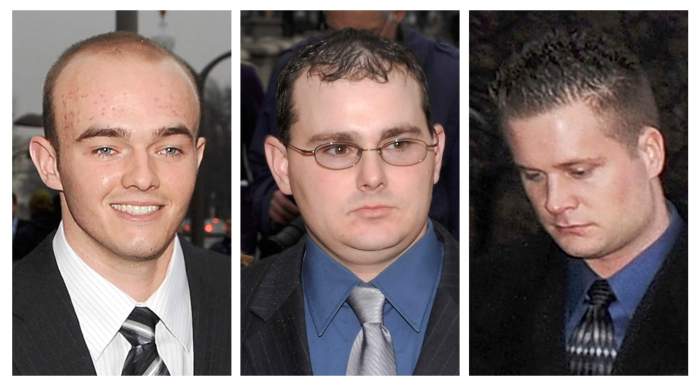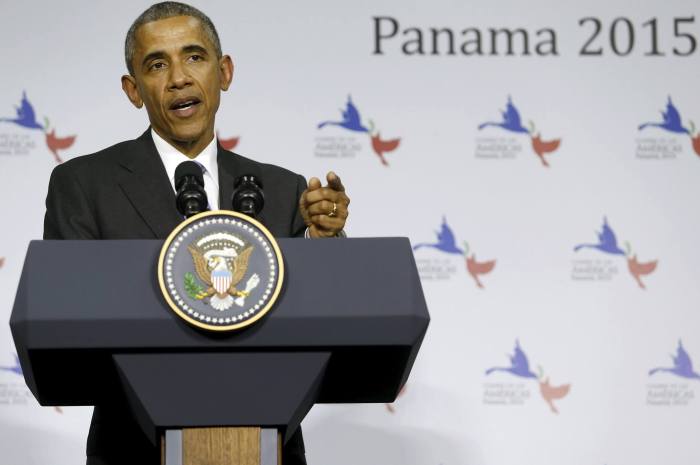Three bomb-related incidents took place over the weekend, two in New Jersey and one in the Chelsea neighborhood of New York, but New Yorkers have an unfortunate, long history with bombs by terrorists and other anarchists. Anarchists Bungle Bomb Intendedfor John D. Rockefeller, 1914
Labor leaders were not big fans of U.S. Steel mogul John D. Rockefeller, blaming him for the deaths of miners and their families in Colorado in April 1914.
Anarchist leader and convicted felon Alexander Berkman and other anarchists and labor leaders thought blowing up Rockefeller’s Tarrytown estate would be the best revenge,according to the blog Ephemeral New York. On July 4, 1914, the attempted terrorists attempted to assemble the bomb from batteries and dynamite in a top floor apartment of a tenement in an Italian neighborhood in Harlem. The bomb went off and killed three bomb makers and one of their girlfriends. “Simultaneously the roof of the tenement house at 1626 Lexington Avenue was shattered into fragments and the debris of it and the three upper floors showered over the holiday crowds, some of it falling on roofs two and three blocks away,” Ephemeral New York quoted The News York Times as writing. Only one survived in that blast, according to The Times. Berkman later admitted his involvement.
Horse-Drawn Bomb Makes a Statement onWall Street, 1920
As the bells on Trinity Church rang noon on September 16, 1920, a horse-drawn carriage packed with 100 pounds of dynamite and 500 pounds of iron was detonated at the southeast corner of Wall and Broad Streets, the “most important junction” of Lower Manhattan’s Financial District, History reported. “That was the loudest noise I ever heard in my life,” J.P. Morgan employee Andrew Dunn later remembered, History reported. “It was enough to knock you out by itself.”
A group calling itself American Anarchist Fighters took credit, althoughpolice later suspected the Galleanists, a gang of anti-government Italian anarchists led by Luigi Galleani.
To this day, the culprit remains a mystery.
‘Mad Bomber’ vs. ConEd 1951
In November 1940, a pipe bomb was found in Con Edison’s headquarters with a note that read, “Con Edison crooks, this is for you,”History reported. There were more attempts that year, until the person, dubbed ‘Mad Bomber,’ sent a note in December that read “I will make no more bomb units for the duration of the war.”
After keeping his promise, the Mad Bomber began sending threats to the press again in 1951. In 1954, one of Mad Bomber’s creations went off at Radio City Music Hall. In 1955, he struck Grand Central Station, Macy’s, the RCA building and the Staten Island Ferry, History reported. During his career, the Mad Bomber hid 33 pipe bombs around the city and injured at least 15 people,according to NPR. Authorities believed the Mad Bomber to be George Peter Metesky, an ex-employee of Con Edison. After a workplace accident in 1931, the company said Metesky was angry the company refused to pay disability. “A mild-mannered man,” as History described Metesky, lived with his sisters in Connecticut until entering a mental institution in April 1957, where he stayed until 1973.
NPR reported Metesky was arrested in 1957.
“Metesky became very adept at melting into society and kind of cruising under the radar,” Michael M. Greenburg, author of “The Mad Bomber of New York: The Extraordinary True Story of the Manhunt That Paralyzed a City,” told NPR.”One of his lawyers referred to him as someone who could pass as your next-door neighbor. And he just didn’t stand out as the type of person that could be the Mad Bomber. He didn’t look like the kind of person that people were looking for.” Weather Underground Flattens Building in Greenwich Village, 1970
An explosion triggered a six-hour fire at 18 West 11th Street on March 6, 1970. Two young women and another person survived and one “redhaired youth” was found dead beneath the charred remains of the building,New York Daily News reportedat the time. The explosion was first blamed on a gas leak, but the Weather Underground, a leftist radical group previously known as the Weathermen, was credited with the blast. Reports said that the group accidentally set off bombs intended for a dance at Fort Dix. “Terry [Robbins] had been told to do it a certain way, and he was too insecure in his knowledge to debate it,” Cathy Wilkerson, a member of the New York terror cell, recalled,Vanity Fair reported. “He cut off the discussion. He was the leader and he would take responsibility for how it was to be done. No one else spoke up.” Actor Dustin Hoffman lived next door. After the explosion, he was seen running from his apartment with valuables, like a painting from an artist friend. The original group, the Weathermen, took their name from a Bob Dylan song, “Subterranean Homesick Blues.”The lyrics read, “You don’t need a weatherman to know which way the wind blows.” LaGuardia Airport’s Deadly Christmas, 1975
Four days after Christmas in 1975, a bomb that had been placed in a locker at LaGuardia Airport exploded, killing 11 and wounding 75,according to CNN. Although many groups were suspected, including FALN, the Palestinian Liberation Organization, the Jewish Defense League and Croatian nationalist Zvonko Busic, no group ever took credit and the crime remains unsolved. It was the deadliest attack in New York City since the Wall Street bombing of 1920, which killed 38, until the terrorist attacks on the World Trade Center in 2001.
1993 World Trade Center Bombing
On Feb. 26, 1993, six people died and 1,000 were injured when seven men, all convicted but only six apprehended by U.S. authorities, attempted to topple the Twin Towers.
Eyad Ismoil and Ramzi Yousef, leader and bomb maker, drove a Ryder truck with a 1,300-pound nitrate-hydrogen gas enhanced bomb stuffed with cyanide into the parking garage below the World Trade Center in Manhattan,according toreports. They parked the truck, lit a 20-foot fuse and fled. Although failing their ultimate goal of toppling the Twin Towers, the terrorists blew a 200 feet by 100 feet hole in the building causing 50,000 people to be evacuated, according to estimates. The ceiling above the PATH train collapsed. As of 1997, seven men have been convicted for the attack: Yousef, Ismoil, Mahmud Abouhalima, Mohammad Salameh, Nidal A. Ayyad, Ahmad Ajaj and the man who got away, Abdul Rahman Yasin.
What linked the seven men was a “radical Egyptian cleric,” according to CBS, Omar Abdel Rahman, a blind shiek who was based in Jersey City, New Jersey at one point.
Abdul Rahman Yasin was the only one to evade U.S. law enforcement, but according to CBS’ “60 Minutes,” he was put in an Iraqi prison in 1994.
CBS News’ Lesley Stahl interviewedYasin in 2002 and he told her the towers were not the original target.
“[Yousef] told me, ‘I want to blow up Jewish neighborhoods in Brooklyn,” Yasin said, CBS reported.
After checking out predominately Jewish neighborhoods, “Ramzi Yousef told us to go to the World Trade Center… [he said] ‘I have an idea we should do one big explosion rather than do small ones in Jewish neighborhoods,'” Yasin said. “The majority of people who work in the World Trade Center are Jews,” Yasin added.
Yasin said he is remorseful and that he got mixed up with people who talked him into it when he moved to Jersey City. “[Yousef and Salameh] used to tell me how Arabs suffered a great deal and that we have to send a message that this is not right … to revenge for my Palestinian brothers and my brothers in Saudi Arabia,” Yasin told Stahl. The FBI’s website stilllists Yasin as a Most Wanted Terroristand states that the U.S. Department of State is offering $5 million for information directly leading to his capture.
ABC Breaking News | Latest News Videos
ABC Breaking News | Latest News Videos
‘Never Forget’ September 11, 2001
On a sunny day in September 2001, Al Qaeda terrorists hijacked three passenger planes: two hit the Twin Towers at the World Trade Center in Manhattan and one was flown into the Pentagon. A fourth plane crashed into a field in Pennsylvania as the passengers struggled to take the airplane back from the terrorists onboard.
World Trade Center’s South Tower collapsed just before 10 a.m. on Sept. 11, 2001. The North Tower fell at 10:28 a.m.
RELATED:PHOTOS: Iconic images from September 11, 2001
Everyone on the planes and nearly 3,000 people on the ground were killed that day,according to History. In the towers alone, a reported 2,606 people were killed and more than 6,000 were wounded.
Times Square Bicycle Bomber, 2008
On March 6, 2008 a man rode his bicycle to New York’s Time Square and left a bomb at the Armed Forces Recruiting Station. He lit the fuse and took off. The bomb exploded.
No one was wounded and the suspect on the bike remains a mystery.
The bomb was constructed similar to devices left at the British Consulate in May 2005 and the Mexican Consulate in October 2007,according to the FBI.
In 2015, the FBI announced a $115,000 reward for information leading to the identification, arrest and conviction of the person or persons responsible for the three incidents.
“Moments before the device detonated, individuals walked by, unaware of the potential danger and imminent explosion,” said then-Police Commissioner William J. Bratton. “We are again reaching out to the public, urging anyone with any information to please come forward to assist us with this investigation so that the persons involved in this plot can be held responsible for this attack.”














